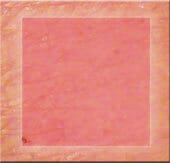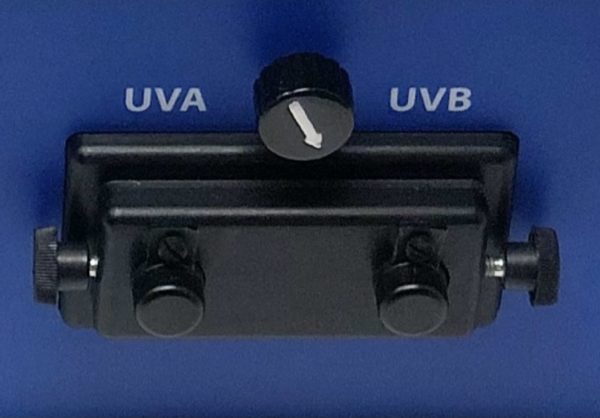DuaLight® - Targeted Phototherapy System
The DuaLight® targeted phototherapy system delivers either UVB or UVA radiation to the skin to treat many conditions. When the skin condition calls for a localized situation, it's best to use a targeted system to avoid exposing non-infected areas from radiation.
Vitiligo, for example, is when there are pigments lost from areas of the skin, creating white patches. The cause of this is unknown, making it more of a reason to protect areas that have not been infected.
⇛ Common Indications for Use
⇛ What Makes DuaLight® the Targeted Phototherapy of Choice
⇛ Brief History on UVB Phototherapy
⇛ Radiation Exposure
⇛ Materials Used In Construction of DuaLight®
⇛ Beam Characteristics
⇛ How Dualight® Operates
⇛ What Others Say
⇛ Costs, Size, Features ... All the Things That Make DuaLight® the Best Choice for Phototherapy
⇛ Energy - Watts - Output
⇛ Reimbursements
Common Indications for Use
What Makes DuaLight® the Targeted Phototherapy of Choice
|
|
DuaLight® provides UVA and UVB capabilities within one system for increased versatility. Pure UVB for maximum effectiveness with a 304nm average weighted erythemal wavelength. |
|
|
Easy to use system interface for UVA and UVB settings as well as MED and MPD automatic Phototest mode. Physicians and their staff can learn to use the DuaLight quickly. The system can be operated by nurse phototherapists and photo technicians. |
|
|
Built-in calibrating port for easy automated calibrating procedure. |
|
|
Patented square aperture handpiece design provides unobstructed view. Lightweight to reduce operator fatigue. Flexible liquid light guide for easy access to areas difficult to reach. |
 |
Disposable tip for hygienic single patient use prevents cross contamination. Transparent material for clear visualization. |
 |
Uniform energy distribution to skin. NO HOT SPOTS! Large 19x19 mm square aperture. Physicians can treat more patients in less time, maximizing their return on investment. |
|
|
Small compact system with an optional cart. It takes up little space, and can conveniently be transported between multiple locations. Unit dimensions: H=16,5 cm W=42 cm D=29,5 cm Weight= 8.4 kg |
Brief History on UVB Phototherapy
It is well recognized that UVB has immunosuppressive properties on the human skin. The earliest form of UVB phototherapy was called heliotherapy and involved the exposure of psoriatic or vitiliginous skin to sunlight (which contains both UVB and UVA rays). This is still practiced today. More modern phototherapy UVB and UVA cabins (booths) are used in hospitals and clinics around the world.
Radiation Exposure
This device is designed to irradiate the entire body. The UV120-2 is different than these cabins in
that the area that is treated is limited to the area of the handpiece (about 3⁄4” square). This allows for UVB radiation to be applied only to the affected area of the skin, and it has been demonstrated that psoriatic skin can take much more UVB without erythema and burning than normal skin. It is one intended use of the UV120-2 to apply more radiation to the affected area in a single treatment than can be done in a phototherapy cabin.
The objective of more radiation per treatment is fewer treatments before clearing, fewer doctor visits, improved patient satisfaction, and overall lower medical costs. UVB imparts immunosuppression to the skin areas that it impinges upon. With the targeted phototherapy only a small fraction of body area is treated (only lesional areas). As a result, there is less overall immunosuppression of the skin per treatment.
Less immunosuppression is desirable since the potential carcinogenic nature of UVB is in large part due to its immunosuppressive activity. The skin has its own unique immune system, and by limiting the area of immunosuppression it is believed that the potential for skin cancers is reduced by the targeted phototherapy approach.
Materials Used In C
onstruction of DuaLight®
The device is constructed of:
- metal
- glass
- plastic parts
Beam Characteristics
The light source of the DuaLight Phototherapy System is a high-pressure mercury vapor arc lamp. The System emits UVA or UVB through two separate output ports. From either output port, UV light is delivered to a Handpiece via a liquid-filled Lightguide. The liquid Lightguide is highly transmissive of UV light and very flexible, thereby helping to avoid problems of brittleness/breakage that is commonly associated with conventional fiber optics.
How DuaLight® Operates
The device has software controls for the detection of radiation for calibration and delivery of therapeutic radiation (timer controls).
The device operates by focusing filtered UVB light from a mercury arc lamp into a light guide that is connected at the distal end to a hand piece. The operator places the handpiece onto the affected skin areas. The fluence of the delivered radiation is determined by the calibration of the device and the time required to deliver a given fluence. The physician or operator selects the desired fluence from a menu on a vacuum fluorescent display. The light from the lamp is controlled by a solenoid-shutter assembly that opens for a period corresponding to the fluence selected by the operator.
The device is intended to have the hand piece placed in direct contact with the skin. Non-ste
rile dispo sable tips for the handpiece are provided to limit potential skin cross-contamination between patients. The device is non-invasive.
sable tips for the handpiece are provided to limit potential skin cross-contamination between patients. The device is non-invasive.
The device achieves its intended purpose of reducing the severity of psoriasis and promoting the repigmentation of vitiligo lesions by the actions of UVB energy on the skin. In lieu of UVB the action of a drug known as psoralen can be used with UVA radiation to achieve this effect.
Output
While the dose is controlled by the built in timer, and is typically 5 to 7 seconds, the output for UVA is 1 to 2 watts, while UVB's output is 0.5 to 0.7 watts.
Reimbursements
Targeted UVB for Psoriasis
Blue Cross and Blue Shield providers in some states provide for UVB Targeted Phototherapy for Psoriasis to be billed under CPT 96920-96923 codes. These codes were initially set forth for laser treatment of psoriasis, but BCBS and some affialiates in the states listed below provide reimbursement under these codes when using targeted lamp system like the DuaLight. It is advised that each practice check with the BCBS provider in these states to ensure that the procedure qualifies for and is reimbursed under these CPT codes.
Targeted Topical PUVA for Psoriasis
Some BCBS providers in the states listed below include targeted phototherapy using UVA and Psoralen for treatment of psoriasis filed as Targeted Phototherapy for Psoriasis under CPT codes 96920–96923. Check with the providers in these states to ensure targeted PUVA procedures for psoriasis qualify for and are reimursed under these codes.
If you have questions about reimbursements regarding a particular condition, please contact your insurance provider for more approved CPT codes.





